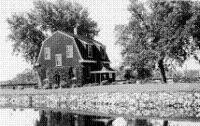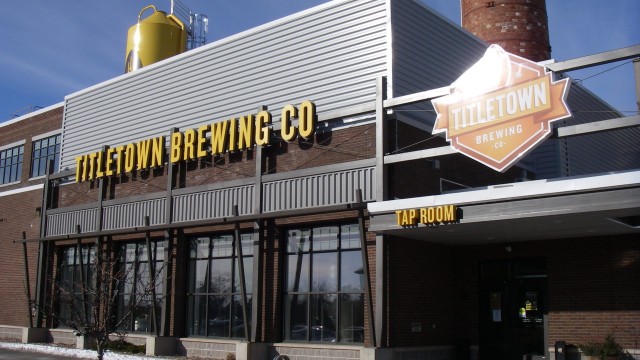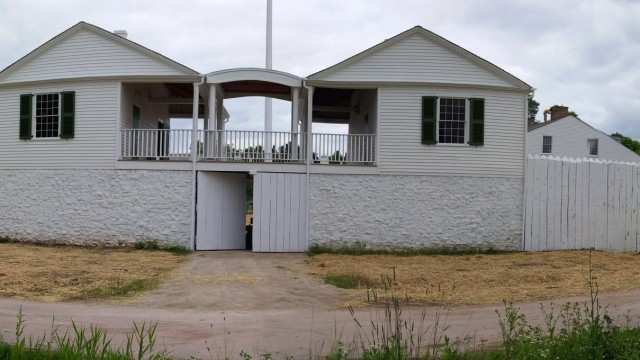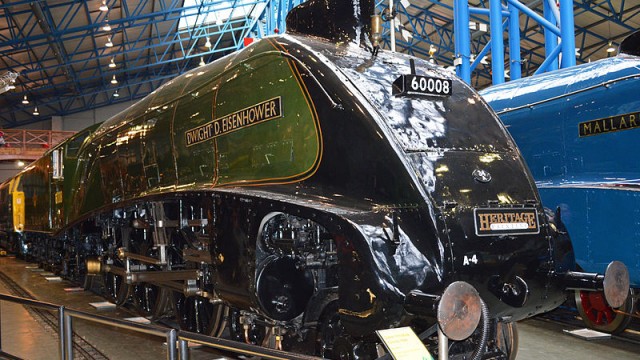Each year the Historic Preservation Committee of the Brown County Historical Society presents awards to businesses, organizations and individuals for their efforts to preserve, restore, and adapt for reuse, vintage and historic buildings in Brown County. These awards are presented at the Society’s annual meeting each February.
The following is a listing of our most recent honorees, the 2014 recipients of the BCHS Historic Preservation Awards:
Locktender’s House, De Pere
A De Pere dam and lock has facilitated transportation on the Fox River since 1837, and in 1912, the current Dutch Colonial Revival style locktender’s house was built, at a cost of $3,012.00, on the dyke (Government Island) between the river and the canal. In 1983, the Corp of Engineers abandoned the system of locktender houses along the lower Fox River. The vacant house fell into disrepair, with mothball projects in 2000 and 2010 to slow the process. Since being listed on the National Register of Historic Places on December 7, 1993, the locktender’s house has been a contributing structure and part of the De Pere Lock and Dam Historic District. Interest in saving the house grew when the city began plans for a new Riverwalk from Voyageur Park to a wildlife viewing pier off of Government Island.
In a true cooperative public-private effort, the Fox River Navigational System Authority (FRNSA) managed the project, the De Pere Historic Preservation Commission solicited grants, and the City served as project lead for hiring consultants to research and to write an Historic Structures Report and an Economic Feasability Study for adaptive re-use of the building. After the Historic Structures Report and Feasibility Study developed a restoration plan and identified commercial options, a local partnership, 3 Dam Guys, LLC, leased the building, completed the restoration/rehabilitation project in accord with National Park Service Design Guidelines, sublet the first floor as retail space. The first floor was outfitted it as a seasonal coffee and snack shop called Locktender’s House on the Riverwalk, which is run by Karvana. Since 2013, the building has served as a regional cultural attraction, a small picnic café, which offers tasty snacks, delicious ice cream and refreshing drinks, and creates jobs for the local economy. Photo courtesy of the De Pere Historical Society.
Titletown Taproom, Green Bay
Larsen Canning dates back to 1882, and as business grew, starting in 1917, its string of canning plant buildings began to extend for blocks down Broadway. In 1998, Larsen Canning was sold, and by 2006, much of the plant became empty. Ever since Brent Weycker opened Titletown Brewing in the former Chicago and Northwestern Railroad Depot, he has looked across the lot at the Larsen Canning buildings to the west. In 2013, as Titletown’s success fostered plans to expand into retail sales, they purchased the Larsen buildings between Dousman and Kellogg Streets. The Larsen basement is now the bottling room, the 1st floor contains a new Tap Room and brewery, the 2nd floor houses Titletown’s offices, the 3rd floor will have a beer hall, banquet area, and leased space, and the rooftop will have a beer garden. In addition to enabling retail beer sales to all Wisconsin counties, the new building will free up increased restaurant and pub space in the depot, and the encircled green space will create an attractive Titletown campus. Photo courtesy of Don Kraft.
Fort Howard Guardhouse, Heritage Hill State Historical Park, Allouez
By the late 1860s, the buildings of the decommissioned Fort Howard were being moved or demolished to clear for the impending railroad. Several were moved into the surrounding neighborhood, including the Guard House to 410 Bond Street, where it was converted to a residence. By December 2008, the house was abandoned, dilapidated, and threatened with demolition. With much cooperation between interested stakeholders, the building was saved and moved to Heritage Hill in 2009. After meetings with interested historians, the Park decided that to best interpret the Guardhouse, they would not only restore that building, but also restore its context by replicating its original sister building, the Commanding Officer’s Office, and thus reproduce the Fort’s main gated entrance. In addition, this new construction provided a chance to address a sloped site that had caused drainage issues since the Fort Howard Hospital was moved to the park in 1975. Along with siting the new building, the Hospital was raised 6 feet and set on a new basement foundation, and the School was raised 2 feet and set on a modified crawlspace foundation. This allowed the site to be regraded to create a level parade ground between all the Fort buildings. After preparation of design drawings and submittal to the state for code review, construction began in 2014. Alongside the new CO’s Office, the accurately restored Guardhouse now stands ready to tell new stories of Fort Howard. Photo courtesy of Heritage Hill State Historical Park
Eisenhower Locomotive, National Railroad Museum, Green Bay
In 1935, the London and Northeastern Railway had a new steam locomotive designed to accommodate a higher speed passenger service. The streamlined A4 class design was instantly recognizable, and one, the Mallard, still holds the 126 mph world record as the fastest steam locomotive. Of the 35 A4s produced, one was named the Dwight D. Eisenhower in honor of the World War II general and future U.S. President. Most of the A4 locomotives remained in service until they were replaced by diesel locomotives in the 1960s. After its withdrawal, the Eisenhower was granted to the National Railroad Museum in Green Bay. Recently, as caretakers of the Mallard, the National Railway Museum in York proposed bringing together the 6 remaining A4 locomotives in 2013 to commemorate the 75th anniversary of the setting of the speed record. Gathering the four in England would be easy, but bringing the Eisenhower from Green Bay and the Dominion of Canada from Quebec posed unique challenges. In exchange for the 3 year loan, the Green Bay museum negotiated that the Eisenhower be restored by the York museum, which had already preserved the Mallard and had the original documentation and paint formulas for the A4 locomotives. In 2012, the Green Bay museum implemented a carefully detailed plan to send the Eisenhower on its journey to Halifax, Nova Scotia where, along with the Dominion of Canada, it was shipped to Britain. After a thorough cosmetic restoration in York, the Eisenhower was proudly displayed next to its 5 siblings. In 2014, the sparkling Eisenhower was returned to Green Bay, where it is once again on display in all its glory. Photo Courtesy of Wikipedia




